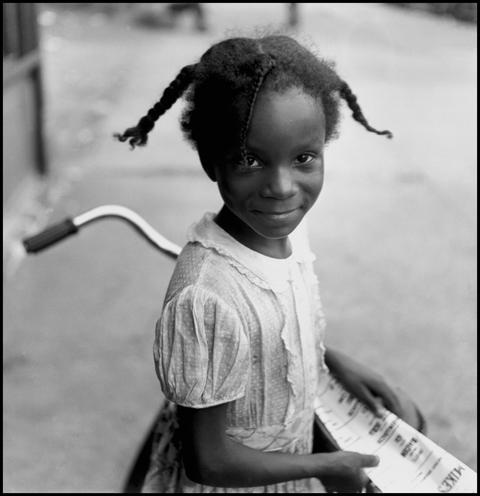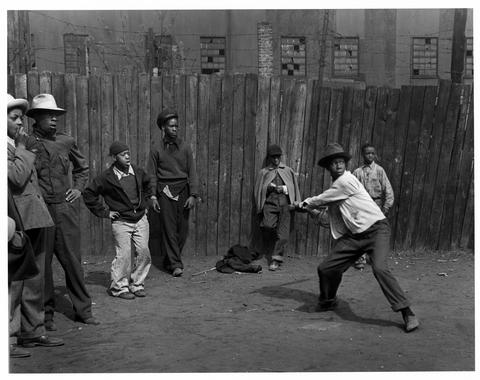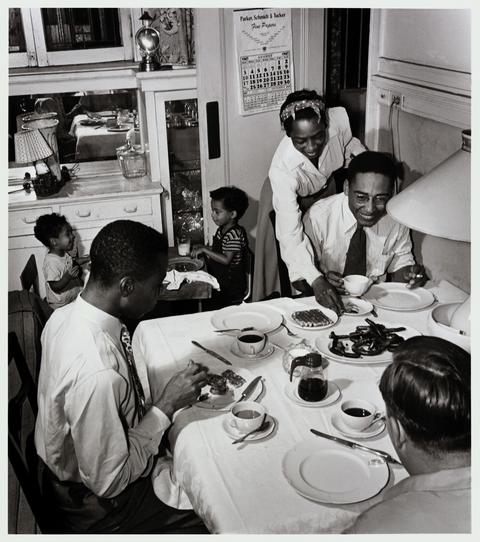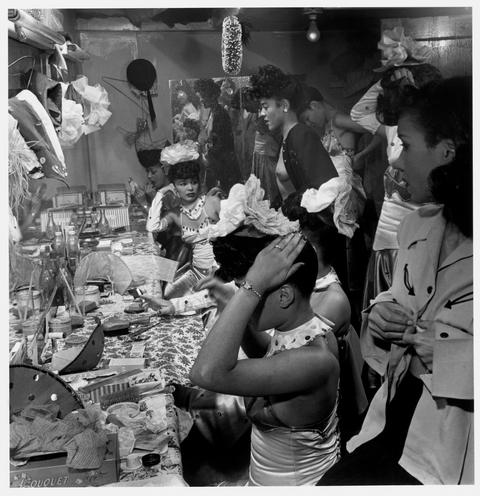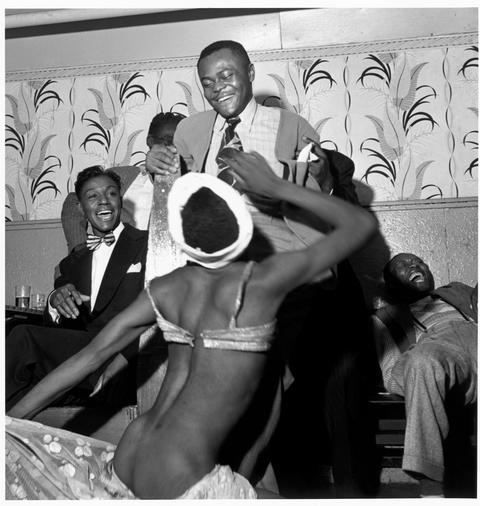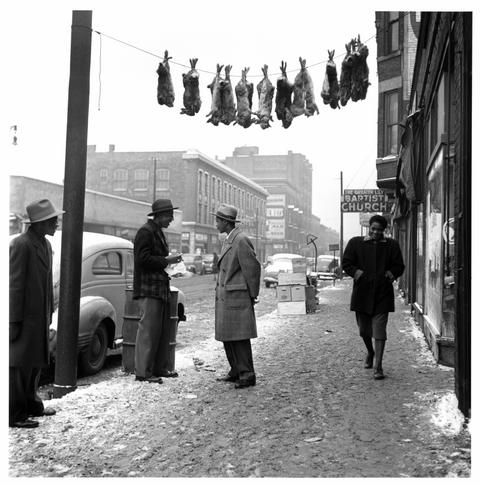Chicago’s South Side 1946–1948
Wayne Miller
In 1946 Wayne Miller had just returned from a stint as a World War II Navy combat photographer when he was awarded two concurrent Guggenheim fellowships to fund a project to chronicle the lives of Chicago’s black residents.
Miller was one of the first Western photographers to document the destruction of Hiroshima and the suffering of the survivors of the bombing. Now, after the war, he trained his camera on the South Side community of thousands of African-Americans, almost exclusively from the South, who had settled in the city during the Great Migration of the war years. Taken over a course of three years, Miller’s black-and-white images provide a visual history of Chicago at the height of its industrial might – when the stockyards, steel mills, and factories were booming. They also capture intimate moments in the daily lives of ordinary people, spanning city scenes from storefront church services to slaughterhouse workers in taverns at night; a glimpse into the hopes and hardships shared by a community of migrants who had just made the long journey from the rural South to the urban North. Miller’s images collected in Chicago’s South Side reflect the enormous variety of human experiences and emotions that occurred at a unique time and place in the American landscape.


